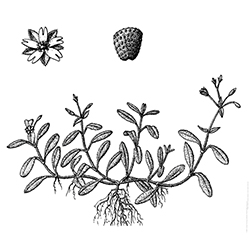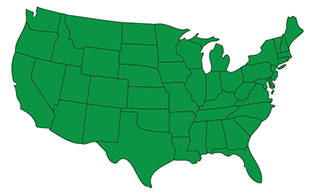

Mouse-ear Chickweed
Cerastium vulgatum
Mouse-ear Chickweed is a perennial broadleaf weed that is also known as Large Mouse-ear Chickweed or simply Mouse-ear. Its scientific name is Cerastium vulgatum.
Identify

Opposite

Entire

Elliptical
Mouse-ear Chickweed has a prominently hairy stem that grows horizontally, though some shoots can grow upright. The leaves of this broadleaf weed are also covered with small hairs. Its stems have two rows of dense hairs and root at the nodes when in contact with the soil. Mouse-ear Chickweed has a fibrous root system, allowing it to form dense mats—especially in lawns. Mouse-ear Chickweed produces small, white flowers with notches at the tips. It can be distinguished from Thymeleaf Speedwell by the prominent hairs on the stem and leaves.
Life Cycle
Mouse-ear Chickweed thrives in lawns and landscapes that receive moderate shade and grow in moist, poorly drained soils. This broadleaf weed can be found in most of the United States and southern Canada.

Control
Cerastium vulgatum can be controlled with simple cultural practices, including increasing soil drainage through aeration. weed-pulling and other methods of physical removal are not recommended as they can spread this broadleaf weed to additional areas of your lawn and landscaping.







